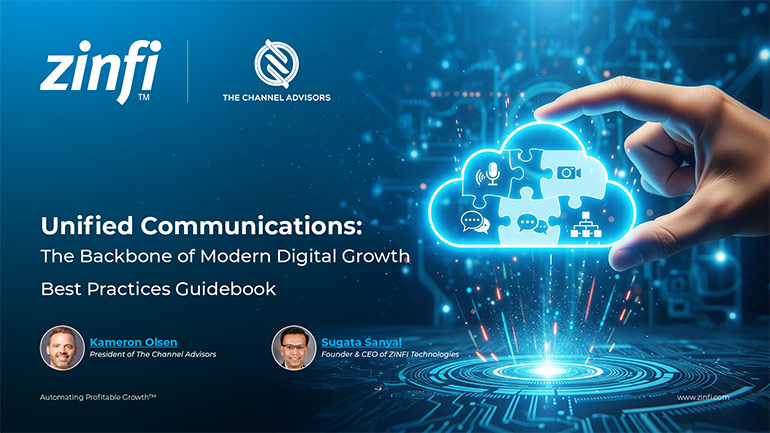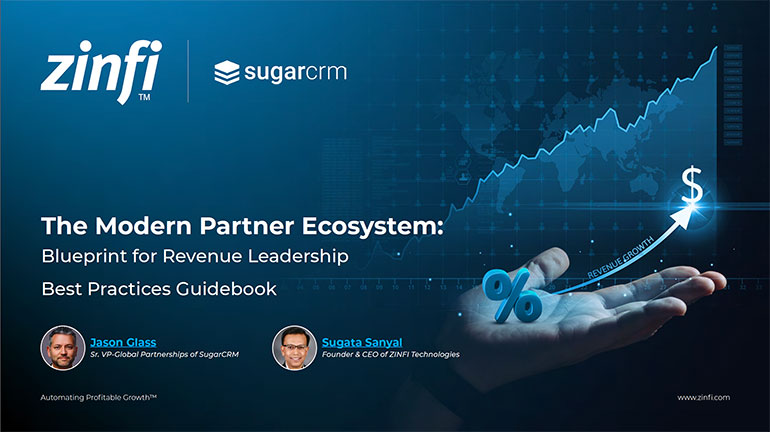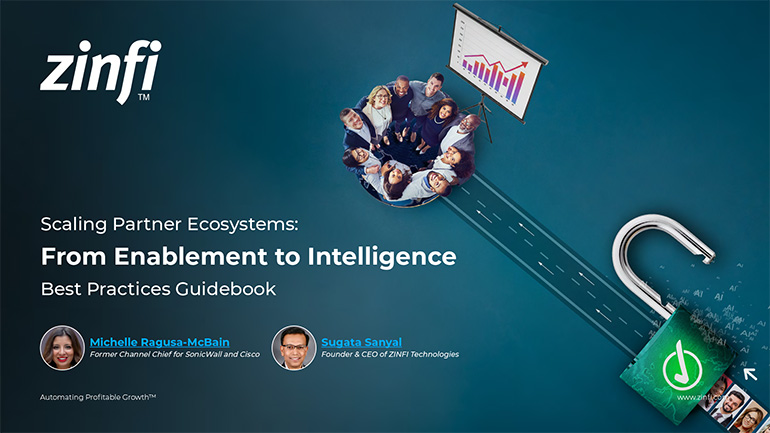Best Practices Articles

Unlocking Cost-Saving Benefits: The Power of Co-Marketing in Driving Business Growth
Maybe you’ve heard about partner co-marketing, and you’re wondering what the big deal is. Well, it’s an excellent concept. In co-marketing, companies join forces and collaborate on promotional efforts for a co-branded offer. By working together, businesses expand their customer base, increase brand reach, and share marketing costs. It’s a powerful strategy that leverages the strengths and resources of multiple companies to create a buzz and generate excitement about their products or services.
Think about it this way: You’re throwing a big party (that’s your marketing campaign). It will be awesome, but you must ensure you fill the room. So, you decide to throw the party with a friend (that’s your co-marketing partner). They invite their friends, and you request yours, and voila! You’ve got a whole house! Now, where does automation fit in all this? Well, it’s like having a perfect party planner. It makes everything run smoothly, from sending out invites (that’s your email marketing) to keeping everyone updated on social media. It makes your life so much easier. Co-marketing usually involves an integrated marketing campaign. Integrated marketing is like putting together a jigsaw puzzle. It’s all about using different pieces – in this case, marketing tactics – that fit perfectly to form a cohesive picture. Using other tools is not enough; they must all work harmoniously to tell a unified story. Let’s delve a little deeper into each of these tactics:- Search marketing: This is like sending out directions to your party. You want to be there when people search for something related to your offer. With good SEO and paid search ads, you ensure that when someone is looking for a product like yours, they find you. Your search marketing needs to align with the overall story you’re telling about your product so that when people find you, they get a consistent message about who you are and what you offer.
- Social media marketing: This is like the chatter before the party. You’re building excitement, sharing sneak peeks, and interacting with your guests. On social media platforms, you engage with your audience, share content related to your product, and build relationships. Again, the story you tell on social media should match the one you’re telling elsewhere.
- Email marketing: Consider this as your personalized invitation to each guest. With email marketing, you’re sending direct, customized messages straight to your audience. It’s a chance to share detailed information about your product, offer special deals, and maintain a connection with your audience. The narrative in your emails should be consistent with your overall brand story.
- Event marketing: This is the party itself. Whether it’s a product launch, a webinar, or a conference, this is where you bring people together to experience your brand in a more immersive way. The story you tell at your event should be a live-action version of your overall brand narrative.
Depending on your product, you might use these tactics just once (a single-touch campaign), or you might use them repeatedly (a multi-touch campaign). Just like planning a party, integrated marketing requires careful thought and coordination. It can be complex, which is why automation is highly recommended. But when it is done right, it can help tell a compelling story that resonates with your audience and drives your business forward. Remember, the goal is to tell a consistent, engaging story about your product across all platforms. That’s the power of integrated marketing.
Business-to-business (B2B), business-to-consumer (B2C), and direct-to-consumer (D2C) are three common marketing strategies used by companies turning to co-marketing to reach their target customers. Here’s a closer look at each of these strategies:- B2B (business-to-business): This strategy involves selling products or services from one business to another. It often involves complex, long-term relationships and high-value transactions. For instance, a software company selling enterprise solutions to other businesses falls into this category. Co-marketing and co-branding work in B2B by allowing businesses to leverage each other’s networks, expertise, and reputation. For example, two software companies might partner to create a product suite that integrates their specialties, providing a more comprehensive solution for their business customers.
- B2C (business-to-consumer): In this strategy, businesses sell products or services directly to individual consumers. This could be anything from groceries and clothes to personal electronics and home furnishings. Co-marketing and co-branding in B2C help businesses reach a larger audience, enhance brand image and offer more value to consumers. For example, a fashion brand might partner with a famous movie franchise to create a themed clothing line, drawing in franchise fans and boosting sales.
- D2C (direct-to-consumer): This is a relatively new strategy where manufacturers or creators sell directly to consumers, bypassing intermediaries like retailers or wholesalers. This strategy has been made possible mainly by e-commerce platforms and social media. In D2C, co-marketing and co-branding can help emerging brands build credibility and reach by associating them with more established brands. For instance, a small winemaker might co-brand with a famous food subscription box, introducing their product directly to a receptive audience.
Here are three examples of co-marketing and co-branding campaigns:
- The "Intel Inside" campaign was a pioneering co-branding strategy to establish Intel as a household name by associating its high-performance products with the computers that used them. The idea was to lift the company out of industry obscurity and into the public eye, linking the rapidly evolving computer market with Intel’s brand. The campaign was successful due to a cooperative advertising program that attracted original equipment manufacturers and placed Intel’s products in mass-produced PCs. Intel also used unique and technologically advanced advertisement campaigns, such as the “measles” ad, Star Wars commercials, and an audio jingle that created familiarity among consumers and set the company apart from competitors. The results were remarkable: Intel’s market capitalization grew from about a billion in 1991 to about 195 billion in 2003, with worldwide sales increasing by 63% in the campaign’s first year alone.
- Another prominent example is the “Stratos” campaign by GoPro and Red Bull. The two companies, both associated with action-packed and adventurous lifestyles, collaborated to capture action sports events from the athlete’s perspective using GoPro cameras. Their most notable project was “Stratos,” in which Felix Baumgartner jumped from a space pod more than 24 miles above Earth’s surface with a GoPro strapped to him, setting three world records and embodying the daring spirit that defines both brands.
- Another example of a successful co-branding campaign is the partnership between four high-end fashion designers (Rachel Comey, Victor Glemaud, Sandy Liang, Nili Lotan) and Target. Despite the gap in pricing and quality between Target’s clothing and high-end designer pieces, the designers partnered with Target to expose their brands to a new generation of potential consumers. As part of the campaign, Target offered exclusive items from these designers for a limited time. This collaboration furthered the idea that Target could be a store where customers could find fashion-forward clothing while the designers gained exposure to a broader market.
- Co-marketing is a strategy involving collaboration: Co-marketing is a unique strategy where two or more companies work together on promotional activities to boost a co-branded product or service. This partnership is about sharing resources and capitalizing on each other’s strengths and market reach. The primary goal is to create a mutually beneficial campaign that can draw consumers’ attention from both companies’ target audiences. The beauty of co-marketing is that it allows for creative collaborations that can lead to innovative marketing campaigns. For instance, two companies may join forces to host a special event or develop a unique product bundle, attracting customers with a value proposition neither company could offer.
- Co-marketing partnerships share promotion results: In a co-marketing partnership, the companies involved collaborate on the promotion and share the results. This includes the benefits, risks, and responsibilities associated with the campaign. Sharing results means that both companies are vested in the campaign’s success. It’s a team effort where success or failure impacts both parties, encouraging collaboration and mutual support. This can lead to a more robust marketing strategy as both companies bring unique insights and experience, optimizing the campaign based on shared data and feedback. The result is a continually improved and refined campaign, maximizing the chances of success.
- Co-marketing can increase customer bases and brand reach: One of the most significant benefits of co-marketing is reaching a broader audience. By collaborating with another company, businesses can tap into each other’s customer bases. This can significantly expand their reach and expose their brand to consumers who may not have been aware of them before. In addition, co-marketing can enhance a company’s brand image by association. If a company chooses a partner that aligns with its values and enjoys a positive reputation, it can strengthen its brand image. This strategy can be particularly effective for small or emerging businesses looking to increase their visibility and credibility in the market.
- Co-marketing allows for shared marketing costs: Marketing can be a substantial expense for many businesses, especially smaller ones with limited budgets. Co-marketing partnerships can help alleviate some of these costs by allowing companies to share the financial burden. Companies can create more ambitious marketing campaigns without shouldering the price alone. In addition to financial resources, companies can also share other resources such as expertise, technology, and staff. This makes co-marketing a cost-effective strategy that can deliver significant ROI, making it an attractive option for businesses of all sizes and industries.
Co-marketing offers a range of cost-saving benefits for businesses. Organizations can pool their resources, share marketing costs, and reach a broader audience by partnering with another company. Companies can tap into each other’s customer bases, expand brand reach and enhance brand image. The collaboration also provides opportunities for creative campaigns and innovative strategies that can lead to better marketing outcomes. Whether it’s a B2B, B2C, or D2C strategy, co-marketing provides a more efficient, cost-effective solution that maximizes ROI and drives business growth – and it can also generate much excitement for the brands involved and their customers.
For more information, please download best practices guidebook.
Best Practices Guidebook
 Partner Ecosystem Playbook: Build, Scale, Succeed Best Practices
Partner Ecosystem Playbook: Build, Scale, Succeed Best PracticesDownload for FREE
 Mastering LinkedIn: Building Personal Brands for Social Selling
Mastering LinkedIn: Building Personal Brands for Social SellingDownload for FREE
 Unified Communications: The Backbone of Modern Digital Growth
Unified Communications: The Backbone of Modern Digital GrowthDownload for FREE
 The Channel Sales Playbook: Skills, Strategy, and Growth
The Channel Sales Playbook: Skills, Strategy, and GrowthDownload for FREE
 Blueprints for Vertical Success Best Practices
Blueprints for Vertical Success Best PracticesDownload for FREE
 The Future of Partner Enablement: From Enablement Gaps to Global Advantage
The Future of Partner Enablement: From Enablement Gaps to Global AdvantageDownload for FREE
 Reimagine Sales Development. Build a Smarter Prospecting Engine
Reimagine Sales Development. Build a Smarter Prospecting EngineDownload for FREE
 The Zero Trust Imperative: Fortifying Enterprise Security Against AI-Driven Threats
The Zero Trust Imperative: Fortifying Enterprise Security Against AI-Driven ThreatsDownload for FREE
 PartnerOps Excellence: The Definitive Guide to Scalable SaaS Ecosystems
PartnerOps Excellence: The Definitive Guide to Scalable SaaS EcosystemsDownload for FREE
 The Modern Partner Ecosystem Best Practices
The Modern Partner Ecosystem Best PracticesDownload for FREE
 Partner Marketing Reimagined: Strategies for Agile, Insight-Led Growth
Partner Marketing Reimagined: Strategies for Agile, Insight-Led GrowthDownload for FREE
 Scaling with PartnerOps Best Pratices
Scaling with PartnerOps Best PraticesDownload for FREE
 Leading with Partner Programs Best Pratices
Leading with Partner Programs Best PraticesDownload for FREE
 The Partner-First Blueprint: Scaling Trust, Intelligence, and Ecosystem Growth
The Partner-First Blueprint: Scaling Trust, Intelligence, and Ecosystem GrowthDownload for FREE
 Unlock Scalable Growth with The Partner Marketing Growth Blueprint
Unlock Scalable Growth with The Partner Marketing Growth BlueprintDownload for FREE
 From TikTok to LinkedIn: Social Selling Across the Generational Divide
From TikTok to LinkedIn: Social Selling Across the Generational DivideDownload for FREE
 Scaling Partner Ecosystems: From Enablement to Intelligence
Scaling Partner Ecosystems: From Enablement to IntelligenceDownload for FREE








